What is Kamatera?
Kamatera is a cloud service platform with a global presence. It provides an enterprise-grade cloud service infrastructure. However, Kamatera did not restrict itself to big organizations only. Even individual users can use their services for hosting web applications or deploying apps.
Because Kamatera is a cloud service, its strength relies on the ability to scale as needed. They have both monthly pricing and hourly pricing models. However, both the pricing models boil down to nearly the same cost per month.
Getting Started with Kamatera Cloud Server
I will be honest with you. I didn’t even know that something like Kamatera existed until a couple of days back when one of my friends excitedly told me that he had hosted his WordPress blog with Kamatera, and he is very happy with the performance.
For the skeptic I am, I couldn’t take his words for granted. I had to test out Kamatera to find out whether it was really as fast as Harry, my friend, claimed it to be? So, I decided to put it to the test.
I did the usual. I created an account with Kamatera. Only this time, I didn’t have to pay, because there was a 30-day free trial available. That was a pleasant surprise! You don’t see such free trials every day!
So, without further ado, let me walk you through my experience with Kamatera.
Account Creation and Account Access
It was simple! All I had to do was visit the Kamatera website, click on the free trial button. Clicking on the button gave a popup where I had to provide my email ID, add a password, and hit the ‘Go’ button!

That’s it! I received an email for account verification. I clicked on it and bingo! The account was created!
Once in the dashboard, I had to add a credit card and give some information about myself (name, address, etc.), and I was all set. The dashboard was staring right at me.
I was worried whether they will charge my credit card or not. They didn’t! It was a free trial.
The control panel interface or the dashboard of the account is surprisingly clean. I loved it. With a left panel menu, navigating through the dashboard was straightforward.
Kamatera definitely put in a lot of effort into making sure that the control panel is not at all intimidating to people.
Here is a quick look into how the dashboard looks like:

There is nothing showing up on the dashboard simply because I have not yet created a server. So, it is time to go ahead and do exactly that.
Creating a Server with Kamatera
The beauty of any cloud service is that you get to select the server as per your requirements. Depending on your website size, the traffic volume, and other factors, you can create a server as per your specifications.
You can even choose the data center that you want.
[How do you select a data center?
Remember, selecting a data center properly is an important aspect. You should opt for a data center that is close to the major segment of your traffic origin.
For instance, if you get most of your traffic from America, you better go for a data center that is in America.
Again, if the majority of your traffic comes from, say New York and its neighboring states, you should go for a data center that is in New York or in one of the neighboring states.
Such a strategic location ensures that your website loads quickly for the major chunk of your visitors.]
I wanted to see how easy it was to create a server with Kamatera.
The process was fairly simple.
From the dashboard, I had to select My Cloud menu, under which, I found the ‘Create New Server’ option.
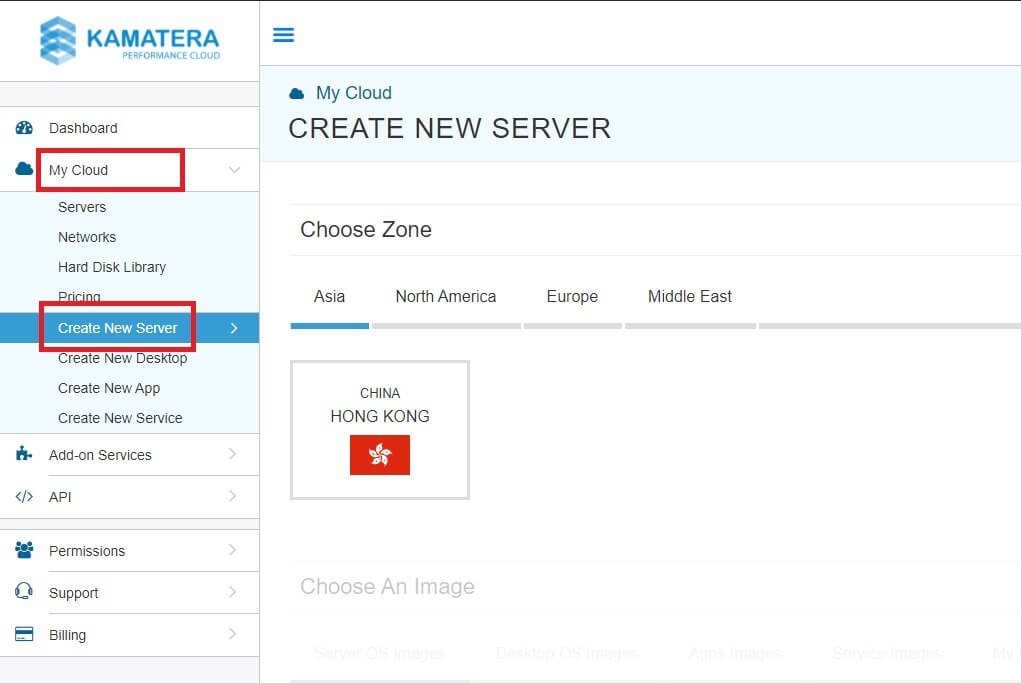
The next thing I had to do was to select a zone. A zone here refers to the location where Kamatera has data centers.
I selected North America, under which I used the New York zone. That was just a random pick. You can select the zone which suits you the best.

Once I selected the zone, I had to choose what I wanted to install on the server that I was creating.
There are multiple options. You can install server OS or desktop OS, service images (like docker, elastic search, etc.), or app images (which are basically different software applications).
You will find WordPress under App Images. So, I selected the App Images tab, under which I found WordPress.
I selected the WordPress option to find another option that asked me to select the WordPress version.
Check out the image below:

I have highlighted the steps that you need to follow with red boxes. The sequence you need to follow is represented by numerals 1, 2, and 3.
The WordPress version that Kamatera gives is the latest version. It will run on an Ubuntu server (which is perfectly fine, because Ubuntu 18.04 is indeed a very stable and advanced operating system).
It will give NGiNX server with MySQL version 5.7 and PHP version 7.2. That’s a great combination.
Now it was time to create a server configuration.
Kamatera offers four different CPU configuration options. They call them Type A, Type B, Type D, and Type T.
Kamatera did an excellent job of giving confusing explanations for the different types. When I am saying confusing, I am excluding developers, server administrators, etc. I am referring to average joes like you and me.
However, what I understood is that the best server types for hosting a small to medium, or even large websites will be Type B. Type A is for those services and applications that do not require dedicated resources like RAM, CPU, etc. Type A is mostly for the development environment.
Type T or Burstable CPU configuration allows you to temporarily increase the CPU cores and RAM beyond what is allocated for your server. Once the need for the extra resources is gone, the additional resources will go ideal.
Type D (or Dedicated) is akin to dedicated servers you find with other hosts. Here, you will have dedicated resources for your web application, or database servers, or whatever you want to keep on the servers. Essentially, Type D is best suited for companies.
Type B is the general-purpose server type that anyone can use (think of it as shared hosting). However, there will be dedicated resources (whatever you select). You cannot scale it up or scale it down. If you want more resources, you have to add more resources and pay accordingly.
So, I went for Type B, which is perfectly fine for any small or medium website receiving up to 100,000 visits a month.
This is what I selected:

You can add daily backups for an extra 3 USD a month and management services for an extra 50 USD a month.
Daily backup is quite evident. Kamatera will take a backup of your website every day (including your website database). Each time a new backup is taken, the old one is purged!
Management services mean that Kamatera will take care of all the updates, upgrades, security patches, etc., and give you any additional help on the technical side.
If you are not comfortable with those technical things, you can go ahead and include management services. Usually, that is not required.
What I liked about the server specs selection process is that the interface will show you the exact price.
I selected 1 CPU core, 1GB RAM, and 20GB of storage. That will cost be $9 per month. Another thing that I liked is that they provide SSD storage. SSD is known for increasing the server speed, and it is the most desired storage type as of today.
Once I was done with the server configuration, it was time to select a networking configuration.
This can be confusing, and hence, I will suggest you keep the default option on. No need to turn on the Private Local Network option, because you want to make your website public.
Also, you will see that under the Public Internet Network, Kamatera is offering 5000 GB or 5TB of internet traffic. This is the bandwidth.
So, the bandwidth is limited to 5 TB. You can increase it to ‘unmetered’ by using the Advanced mode.
Check the image below, which gives 5 TB bandwidth:

The next image shows the option of selecting ‘unmetered’ bandwidth:

If you are going for unmetered bandwidth, Kamatera will throttle the speed to 50 Mbit/sec of data transfer. If you are opting for 5 TB bandwidth, data transfer will take place without speed throttling on a 10 Gbit/sec port.
If you want your website to be fast, I will suggest you keep the bandwidth to 5000 GB or 5 TB.
Don’t worry, 5000 GB or 5 TB bandwidth is enough to handle millions of visitors per month.
The next thing I had to do was to deal with the Advanced Configuration settings. Unless you know exactly what you are doing, I will never suggest you to fiddle around with this setting.
Still, if you want to see what’s there in the Advanced Configuration settings, select the ‘Show’ option, and here is what you will see:
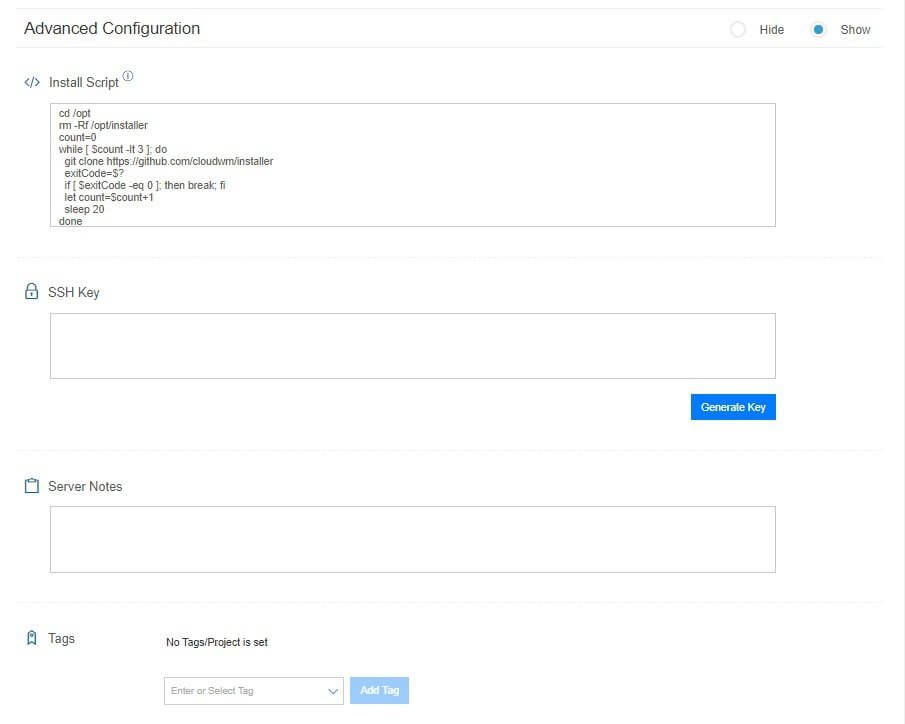
What you are selecting the server and installing WordPress, a script will run on the server. You can see the script in the top box.
The second box shows you the option of creating a pair of SSH keys. SSH stands for Secure Shell. It allows you to access your server remotely using a pair of keys. You need third-party applications like Putty to access your server remotely.
Now, since I do access my cloud servers remotely, I always generate a pair of SSH keys.
This is how it looks:
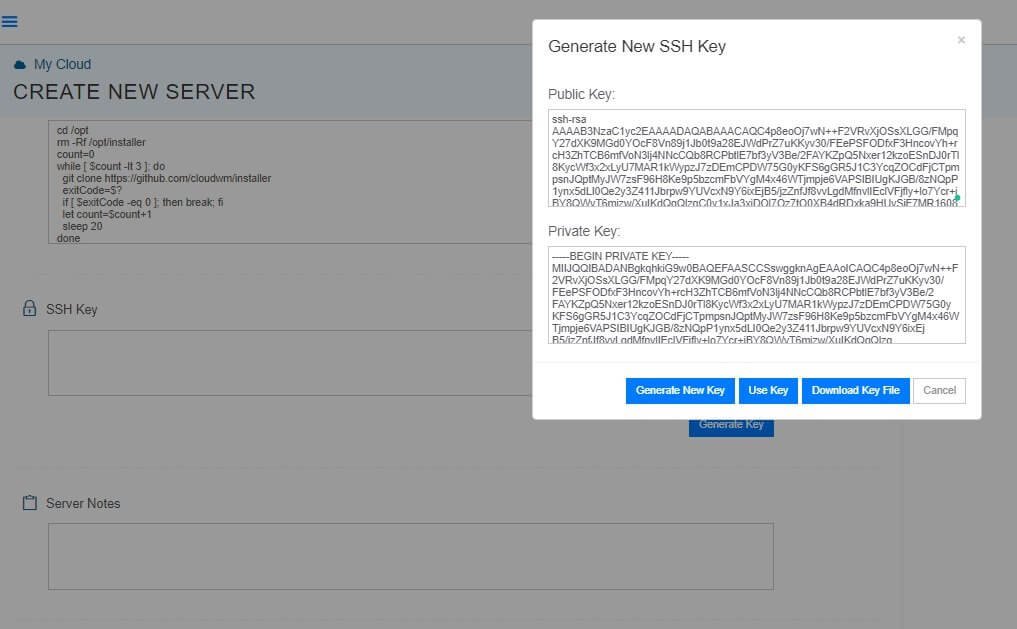
The first key is the Public Key, while the second one is Private Key.
Here is a closer look:

Even if you are trying to copy this thing, good luck with that! You can see only segments of the keys. Also, I have already changed the keys! The pair you see here won’t work.
Okay, now what will happen if I click the Download Key File button you see above?
It will download the Private Key as a text file. No one else will ever know this key but me. I need to keep it safe because I will need it when I try to remotely connect with the server.
When I click the Use Key button, the Kamatera dashboard or console or the control panel will save the Public Key.
This is what you will see:
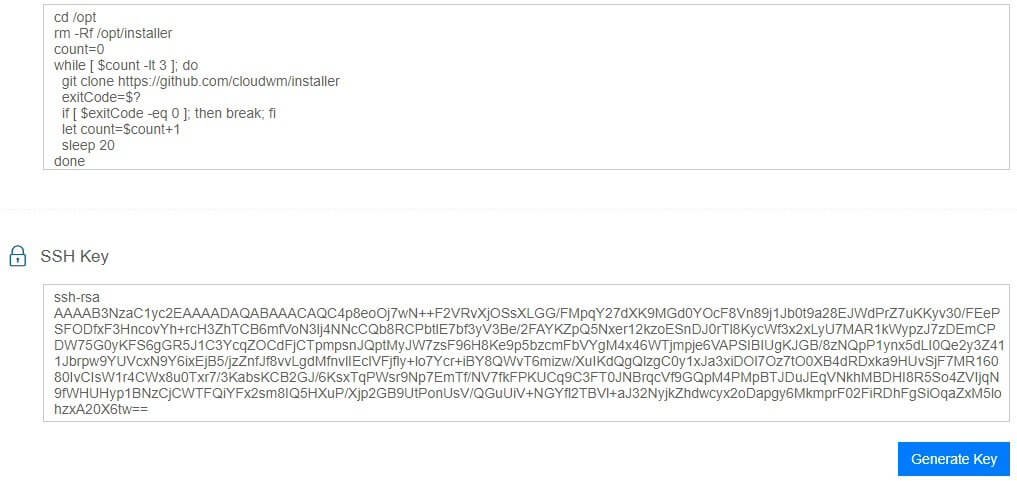
You can leave the server notes and tags empty.
Now, it is time to finalize the settings of the server and assign a password. There are specific password rules.

The moment you click on the password field, you will see the rules you need to follow in a tooltip box.
Create a password following the rules and enter the same password in the Validate field.
You also need to tell how many servers (with your selected configuration) you will need. You can assign the name of each server.
There is a flip button saying ‘Power on Server.’ Leave it on! Once you finalize the settings, the Kamatera will create the servers for you and turn them on.
This is what you will see when you set the password correctly:

This is what you will see when you select the number of servers:

I went for three servers and named them Kamatera 1, Kamatera 2, and Kamatera3. You can launch as many servers as you want and assign whatever names you want. You can name each server after your website name.
Since I will launch three servers, I have to pay $9 per server per month. This will mean I have to pay $27 per month.
Now, click on Create Servers button at the bottom:
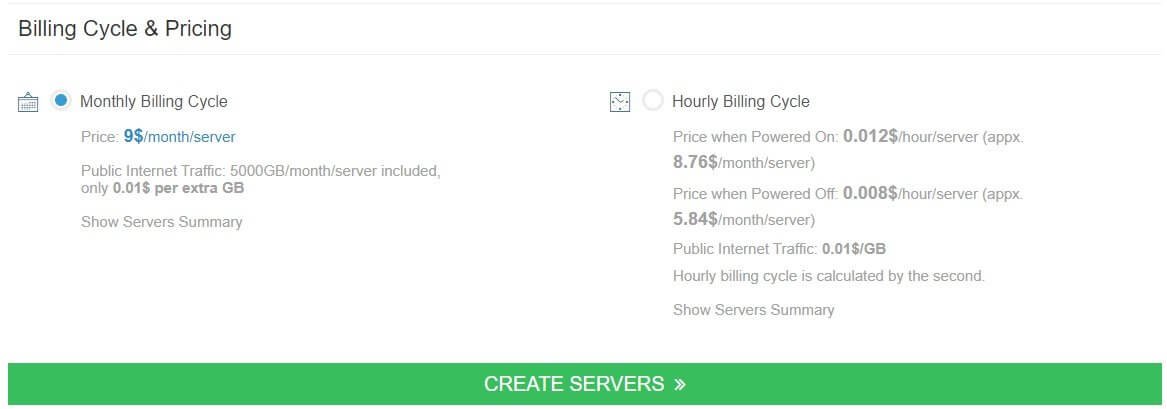
Notice carefully. You have two billing options. I opted for Monthly Billing. You can go to Hourly Billing. If you are opting for the second option, the average monthly price you will pay per server is $8.76 if you keep the servers turned on.
If you choose to turn off any or all of the servers, you will still pay the price, which will be approximately $5.84 per month per server.
This is a great feature! It is particularly helpful if you are in the process of creating your websites that are yet to go live.
When you click on the ‘create servers’ button.
Once I created the server, this is what I see:
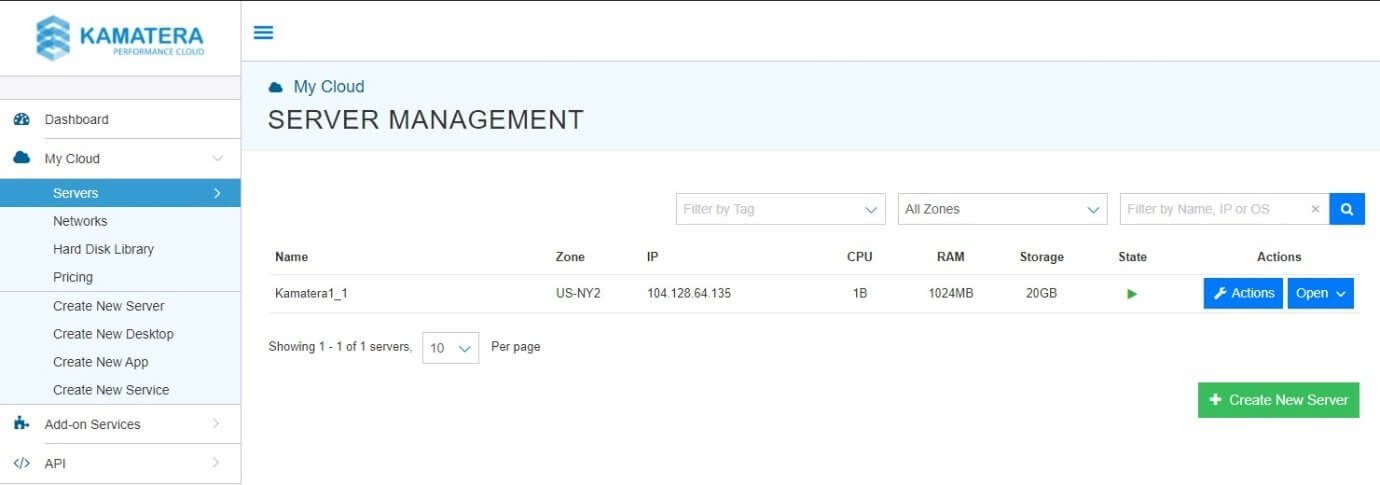
You can see the list of all servers you have created in the console by navigating to My Cloud >> Servers.
You can see only one server here because I created only one (as allowed by the free trial).
If you click on the ‘Open’ button on the right, you will see this:
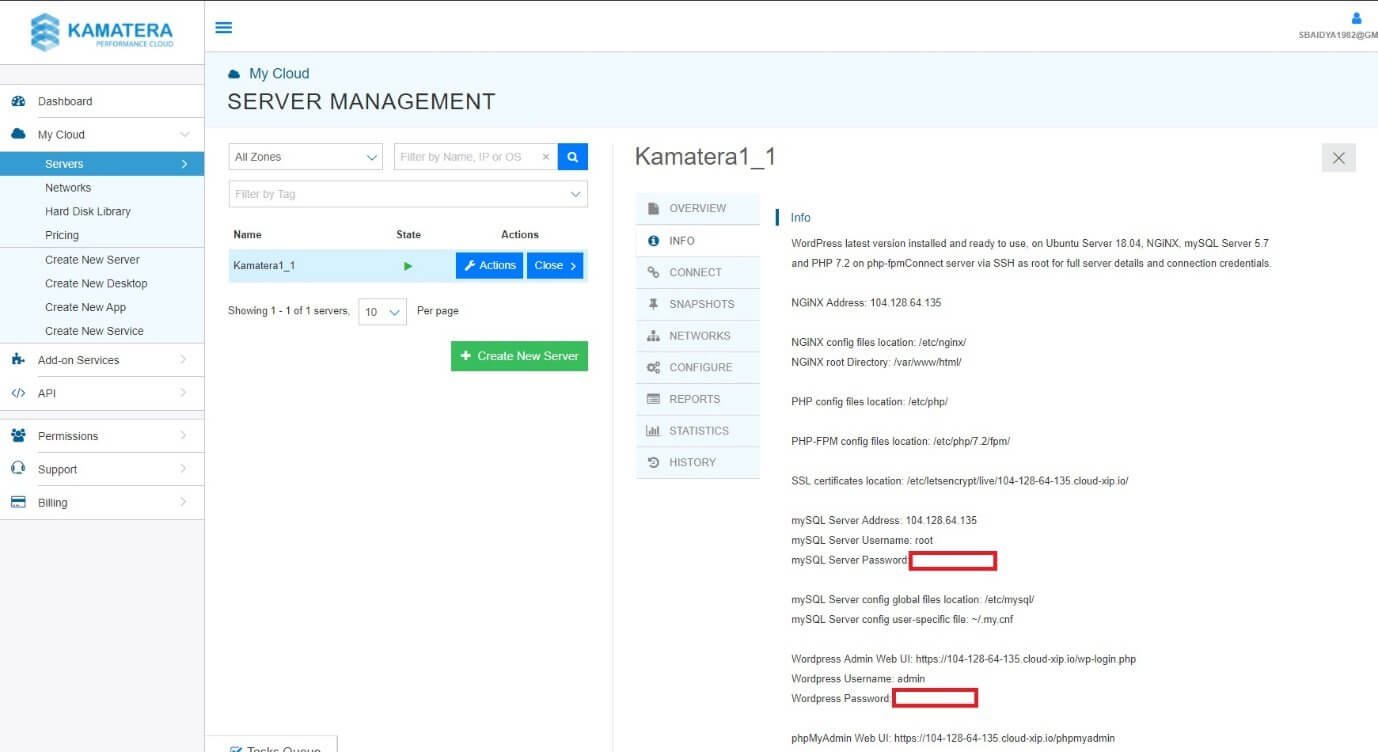
I hid the passwords deliberately.
The Info segment will give you various details, of which the most important is the WordPress URL and login password. Remember, the WordPress URL here is the address of the WordPress installation on the server. It includes the server IP address.
It is not the URL of your WordPress site you will build.
Check this closeup image:
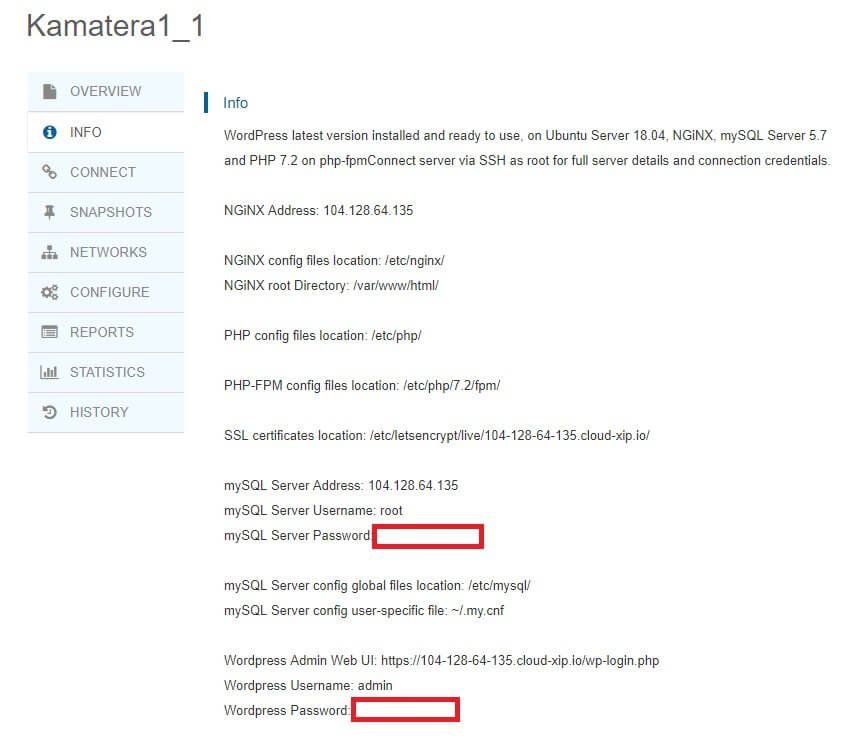
Note carefully that the NGiNX address (104.128.64.135) is in the WordPress Admin Web URL (https://104-128-64-135.cloud-xip.io/wp-login.php).
You are yet to complete the installation of WordPress, and there is a lot of configuration to be done.
Bottom Line?
The server creation process with Kamatera was simple.
Even a person with nearly zero knowledge of cloud servers can deploy a server in less than 2 minutes.
I loved truly loved the interface.
One more thing…
If you think that you will need to increase the server specs (that is, increase the RAM, CPU, etc.), you can do so by going to the Configure tab.
This is what it looks like:
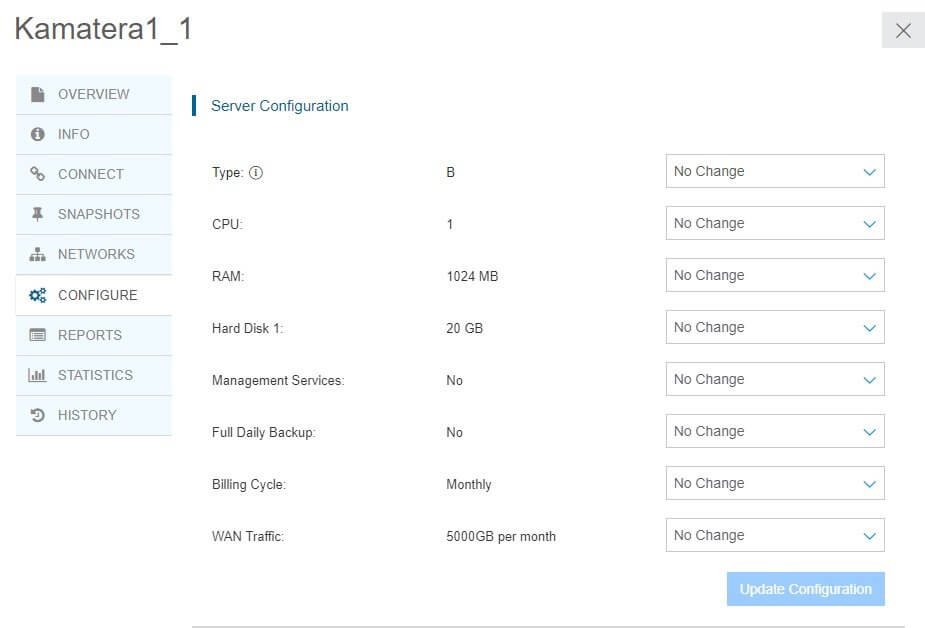
You can change every aspect and hit the Update Configuration button. That’s it! Your server will upgrade, and you will be billed accordingly.
Isn’t that simple?
I am smitten!
Working with WordPress on Kamatera
When I created the server, I selected WordPress. Yes, WordPress was installed, but the entire setup was left. So, let me walk you through the setup process.
I have to use the URL that includes the IP address of the server.
Here is the screen of how it looks:
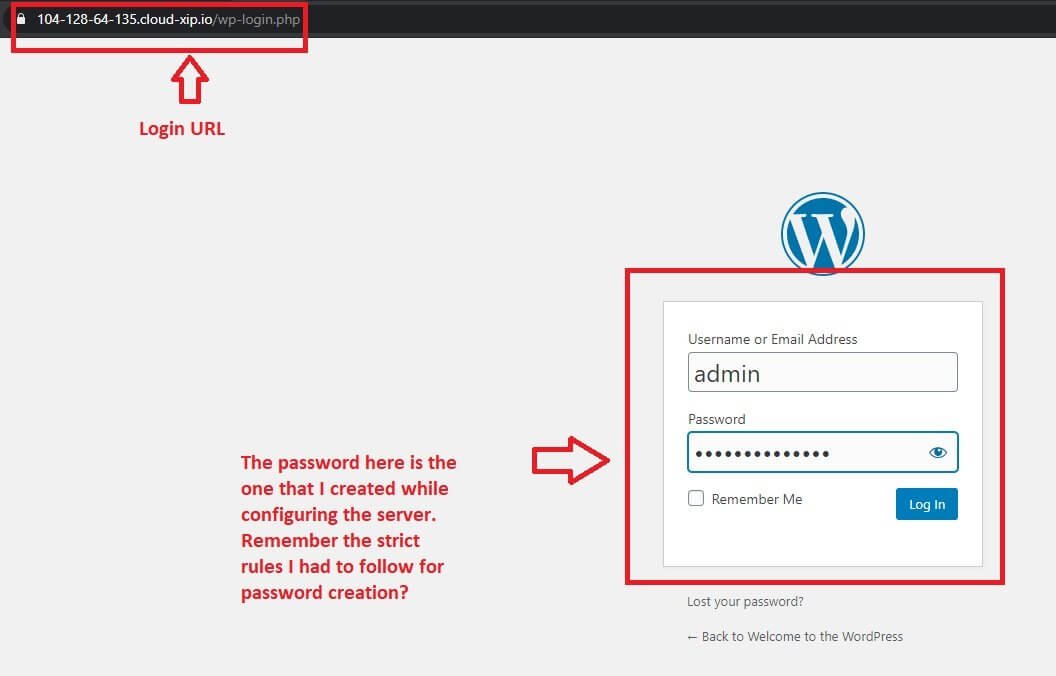
Now, look at the URL. It contains the IP address of the NGiNX server.
Look carefully at the URL. It is an HTTPS URL because you can see the tiny lock icon next to it. So, you don’t have to worry about the SSL certificate. It comes pre-installed.
I need to log in to complete the setup.
By default, the username is admin – that is what Kamatera will create by default during WordPress installation.
The password here is the password that I used during the server configuration.
Once I log in, this is what I see:
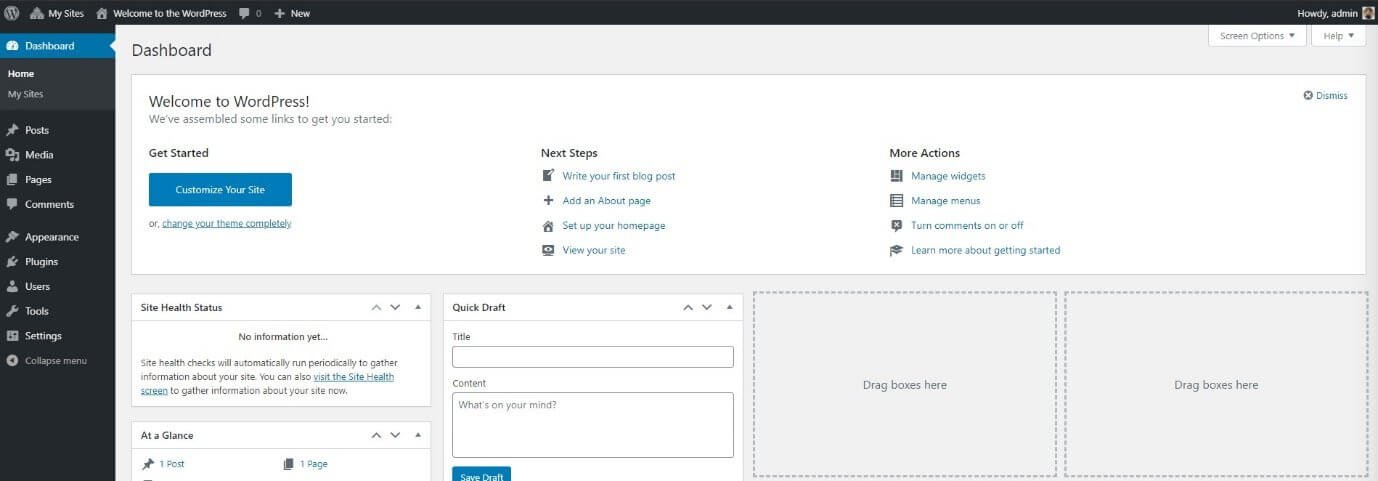
This is not your site! It is just the WordPress dashboard with the server IP address still showing up.
This is the front end of the WordPress installation:
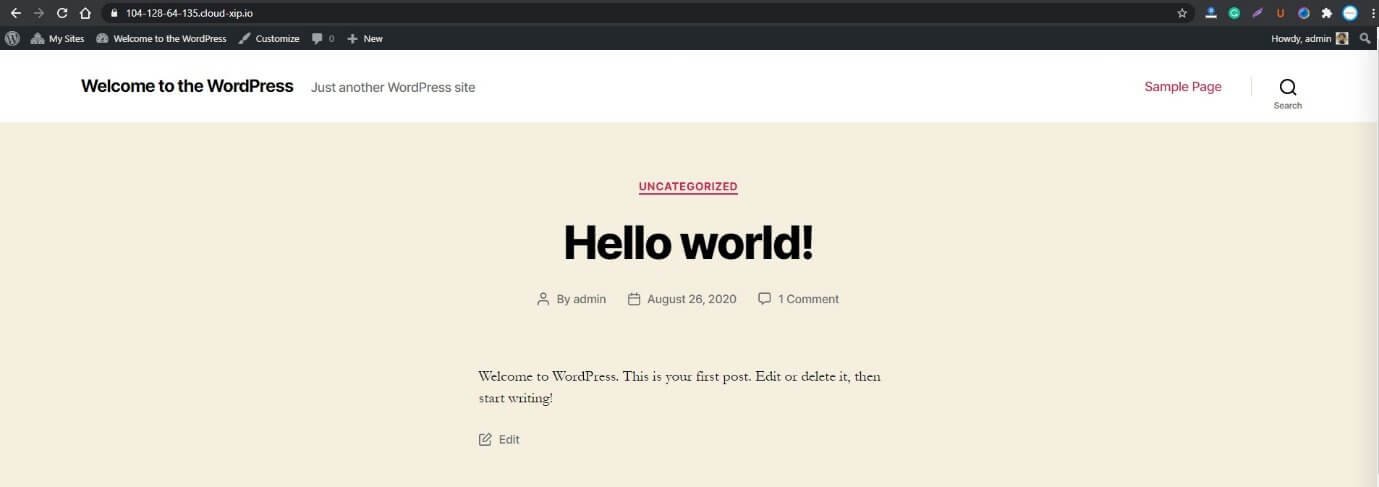
Now look at the URL:

Where is your domain name?
It is not there. So, if you are do add your domain name, you have to go to your domain registrar and update the A records.
Different domain registrars have different interfaces. I cannot show the process of updating A records for every registrar.
Since I use BigRock for registering all my domains, I can show you that.
In the case of any registrar, the place where you need to go to update the A records is the DNS management segment.
This is how it looks like in BigRock:

You can see the ‘Add A Record’ button. You need to click on it to add a new record. You can already see that there is an existing record. It is for the mail server. I have that because I purchase a mail subscription as well.
You may not have this. Don’t worry if you don’t see anything in the A records list. It is fine.
Clicking on the button takes me here:

Ignore the highlighted boxes. They are not highlighting. I hid my domain name from your guys! The logic is simple. Ideas are not copyrighted. I don’t want anyone to capitalize on the idea I have.
Now, coming to adding the A record, I need to put the server IP address of Kamatera in the field, which reads ‘Destination IPv4 Address.’
You can leave the Host Name blank. Some domain registrars will want you to add @.
This is what it looks like in my case:
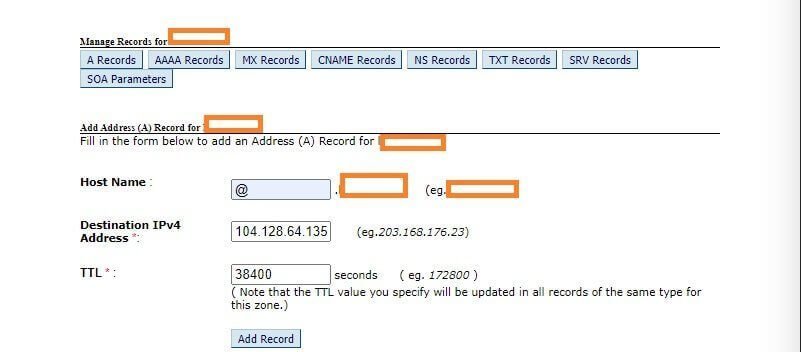
Now, once I hit the Add Record button, I will get back to this screen:
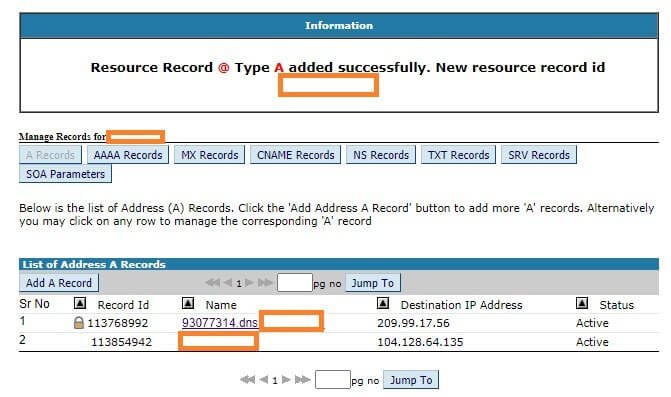
Now, I will add one more A record using WWW. I like WWW because it makes the website URL look good and professional. That’s my preference. You can skip that.

Notice that in the Host Name field, I added WWW. Once I add the A record, this is what I will see:

Now, it is time to check the DNS propagation. I need to know whether my domain is pointing to Kamatera’s server or not.
To do that, I need to visit https://whatsmydns.net.
On that website, either enter yourdomain.com or www.yourdomain.com and hit the search button.
This is what it will look like:

The small red crosses you see, should all be green ticks. Once you get all green ticks, you will know that the DNS propagation is complete, and your IP address is pointing to the Kamatera server.
This is what it looks like when DNS propagation starts happening:

You see those green ticks? There shouldn’t be any red crosses! As of now, the propagation is not yet complete. It might take up to 48 hours, but as far as I have seen, it takes about 2 hours (and sometimes, 30 minutes).
Since the DNS propagation has already started, I will go ahead and change my site name, URL, etc. to what it should be. The URL should never show the server IP address.
To achieve that, need to head over to the WordPress dashboard and change the Site URL and WordPress Address URL.
Unfortunately, when you install WordPress on the Kamatera server, it will create a multisite installation.
This leads to a big problem! You will not have the option of changing the URLs. Usually, this is what you should have:
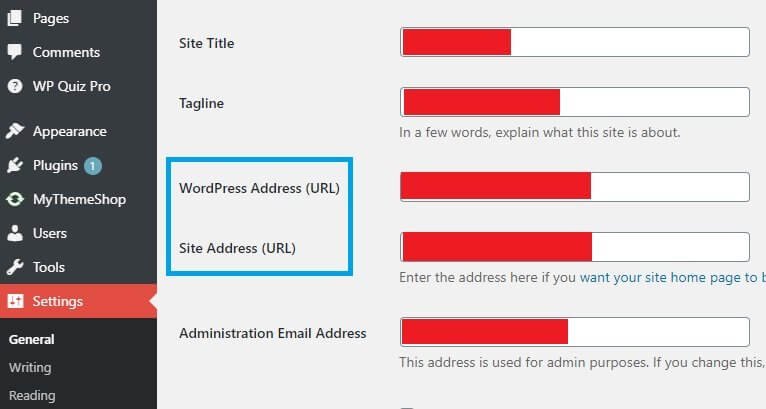
Check the blue box. Those two options should be there in Dashboard >> Settings >> General in your WordPress installation dashboard.
This is missing in the WordPress installation I have in Kamatera. I find this on my new Kamatera installation:
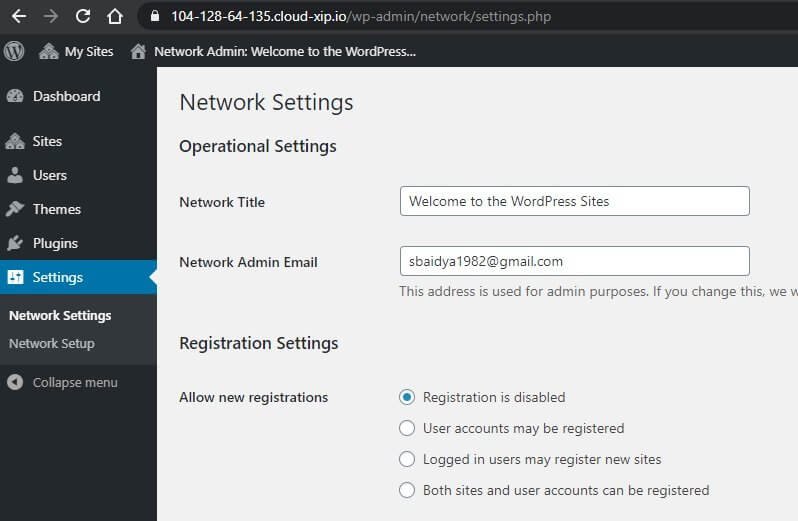
Site dashboard settings:
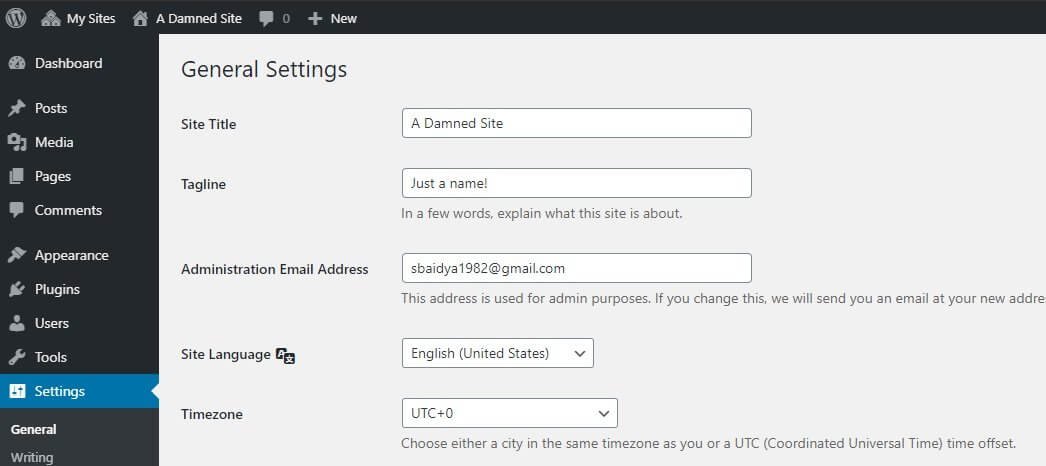
There is no way I can change the URL.
What do I do now? I have to do that from the database.
And trust me, I have no idea of whether that will work or not! I have to test it. Doing this may break the site or make it completely inaccessible.
There are two ways of doing this. First, I can go to the phpMyAdmin interface and edit the tables by running SQL queries or, I can use a simple plugin.
Using the phpMyAdmin interface can be very intimidating. In case you don’t know how MySQL database works, I will NEVER suggest doing that.
It is better to opt for the plugin.
So, I installed a plugin named Search & Replace by Inpsyde GmbH.
There is a problem. In a networked site like the one I have on Kamatera, the only person who can install a plugin is the network admin, and that has to be done from the network settings panel.
The plugin installation option is not available for individual sites.
Anyway, since this is not a tutorial for WordPress multisite, I will skip showing that. I will show the plugin interface after I installed it.
Here is what it looks like:
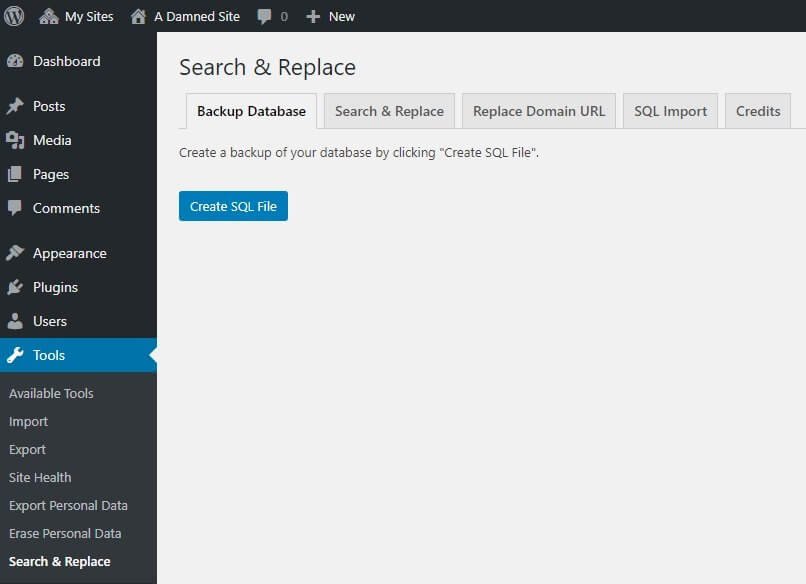
The only way you can access this plugin is by visiting the site dashboard and then looking under the Tools menu.
Before you start using the plugin, click on the Create SQL file to take a backup of your database. This is necessary because if something goes wrong, you can quickly go ahead and replace the corrupted database with the backup file to restore your website.
Once you take the backup, click on the Replace Domain URL tab. You will see this:
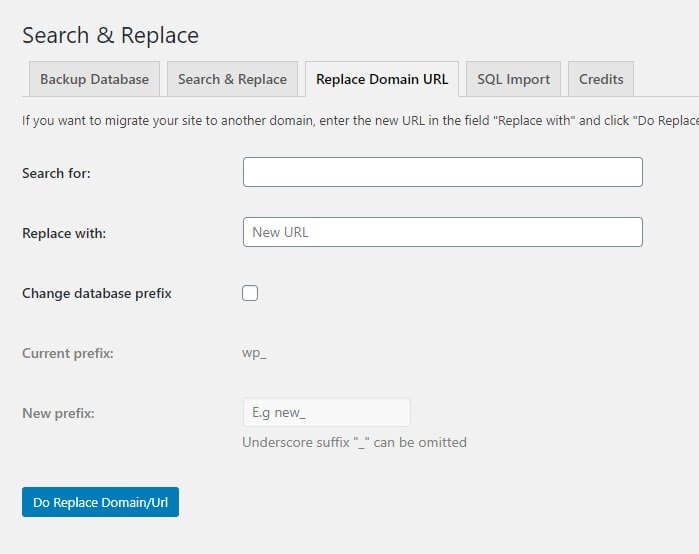
Here, use the URL using the IP address of the server in the “Search for” field. In the “Replace with” field, add your domain URL.
Don’t touch anything else.
Now, hit the “Do Replace Domain/URL” button.
This is how it should look:
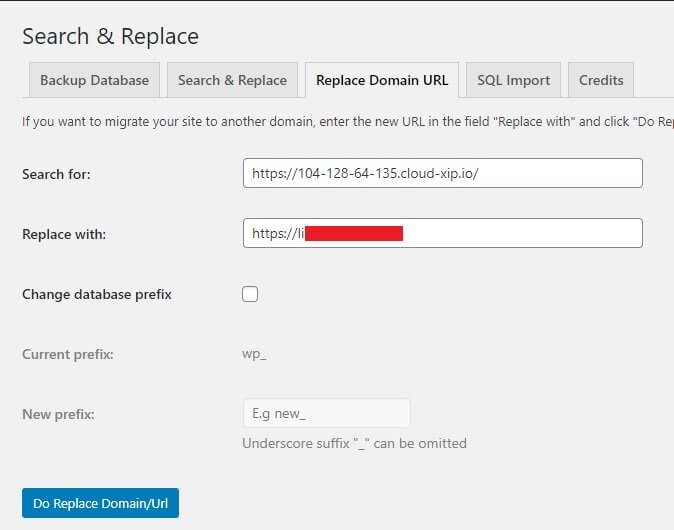
This should work.
Once it works, this is what the site URL should look like:

However, if the replacement method is not working, you have to visit the phpMyAdmin interface and change any remaining URL using the server IP to the one that belongs to your domain.
This is how the interface looks like:
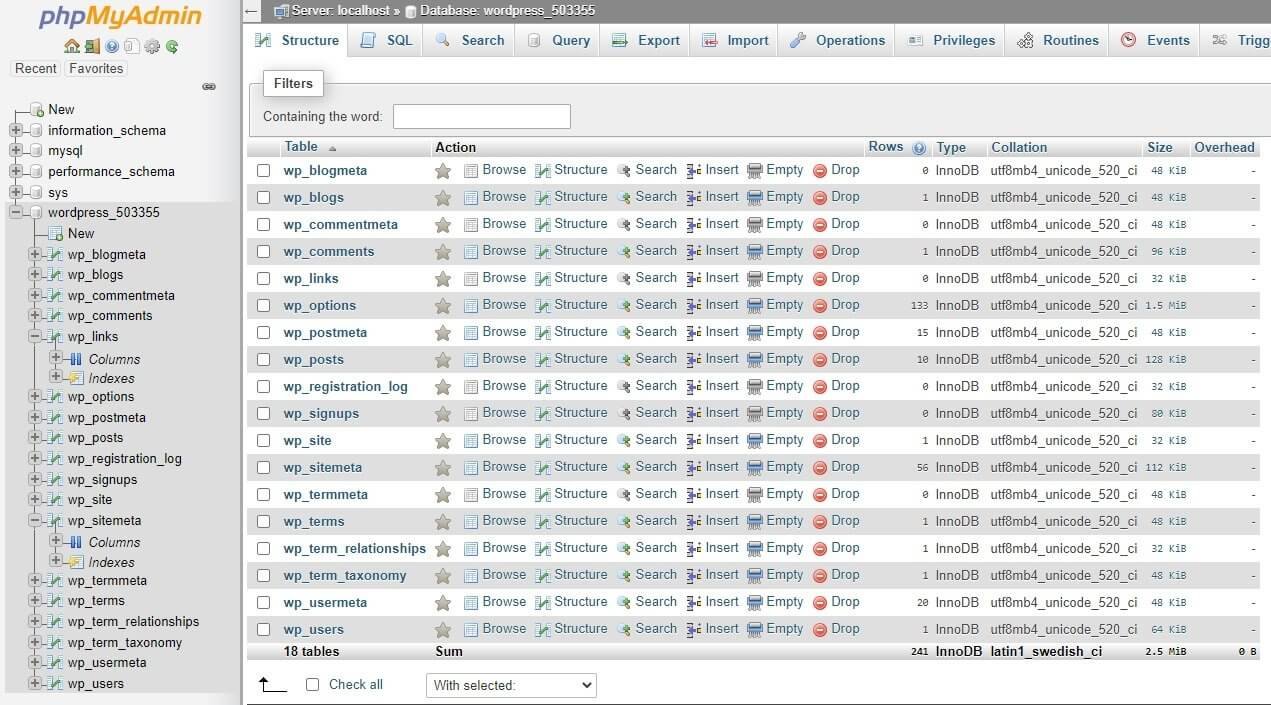
You can get the link to the web interface for phpMyAdmin from your Kamatera server console. The user name for login will be ‘root,’ and the password you created during server configuration will be the password you need to use to log into the phpMyAdmin interface.
Once you are on the interface, conduct a search from here:

Once you click on it, use the URL in the search field and hit the ‘Go’ button. This is what it will look like:

Once you have set everything, on the right corner of the screen, you can see a Go button. Click on it. The search will bring up the list of all tables that still contains the URL that uses the server IP.
This is what you will see:
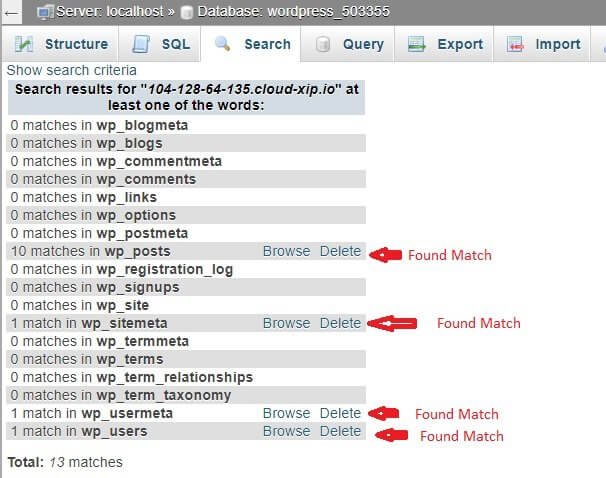
Now, click on each table, find the URL, and replace it with your domain URL. It is intimidating, but that is what you need to do!
Speed of Kamatera Server
Now, it was time to test how fast the server was. It really doesn’t matter whether you are using the default URL (using the IP address) or the domain URL (after full propagation happens). So, I test it before the DNS propagation happened.
I first used the Pingdom tool.
This is the test result I received:
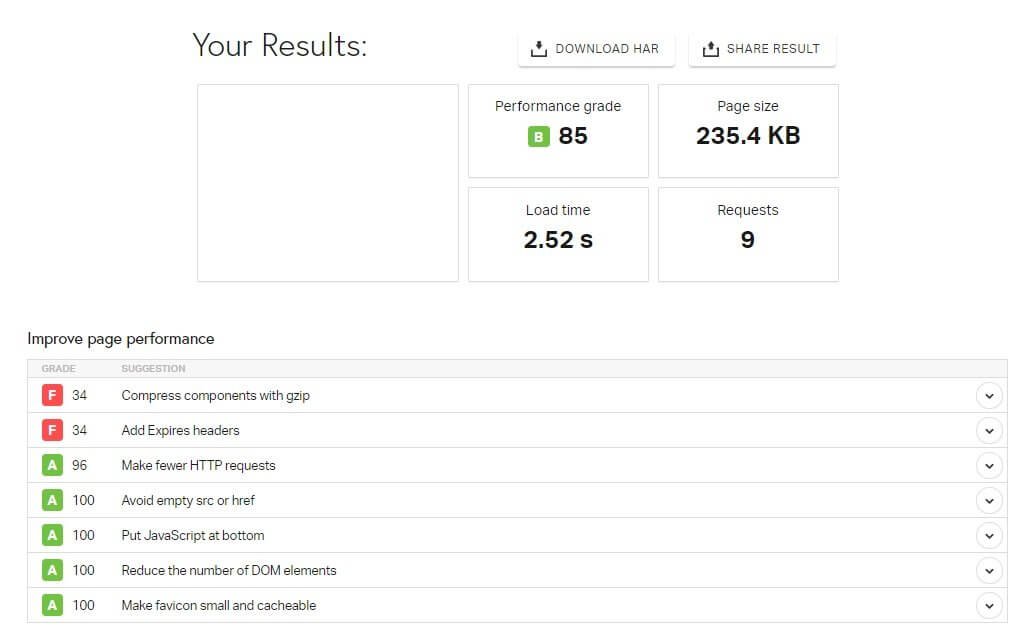
The load time is 2.52 seconds, with no plugins installed. I have not added gzip compression or “expires headers” optimization.
I re-ran the test using Google’s PageSpeed Insights, and this is what I found for the desktop:
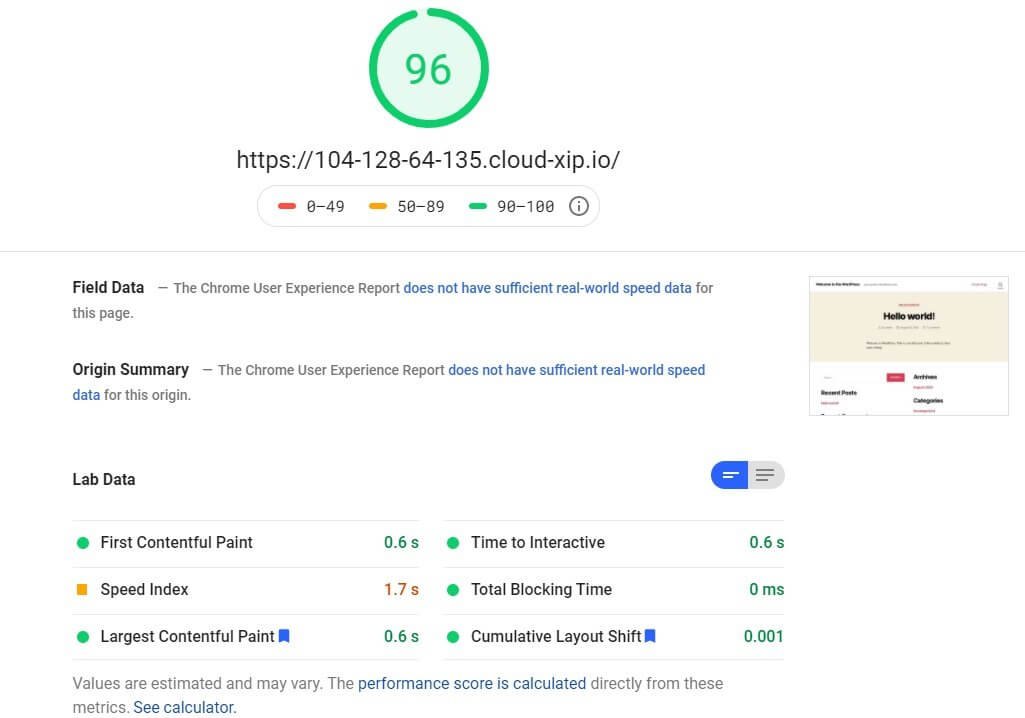
This is what I found for mobile:
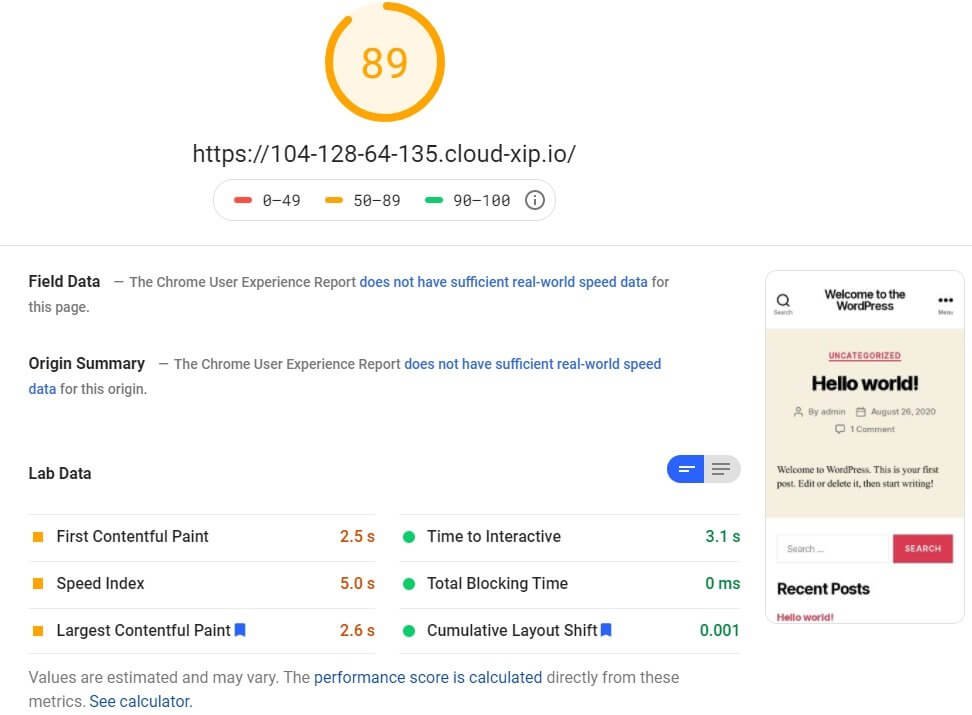
The results are quite good without any optimization. In fact, Google says it is great.
Now I wanted to see what happens when I added optimization to the site. So, I used a plugin.
Before I talk of the plugin, what I found was that the backend was slightly slow, despite the frontend being reasonably fast. It was a bit disappointing, but not a big deal.
I added the plugin named Add Expires Header and used the default settings. This is what it looked like:

This is the free version of the plugin. I did not upgrade to the pro version, which will give me more control.
Once I installed it and re-ran the test using Pingdom and Google PageSpeed Insights, this is what I get:
Pingdom result:
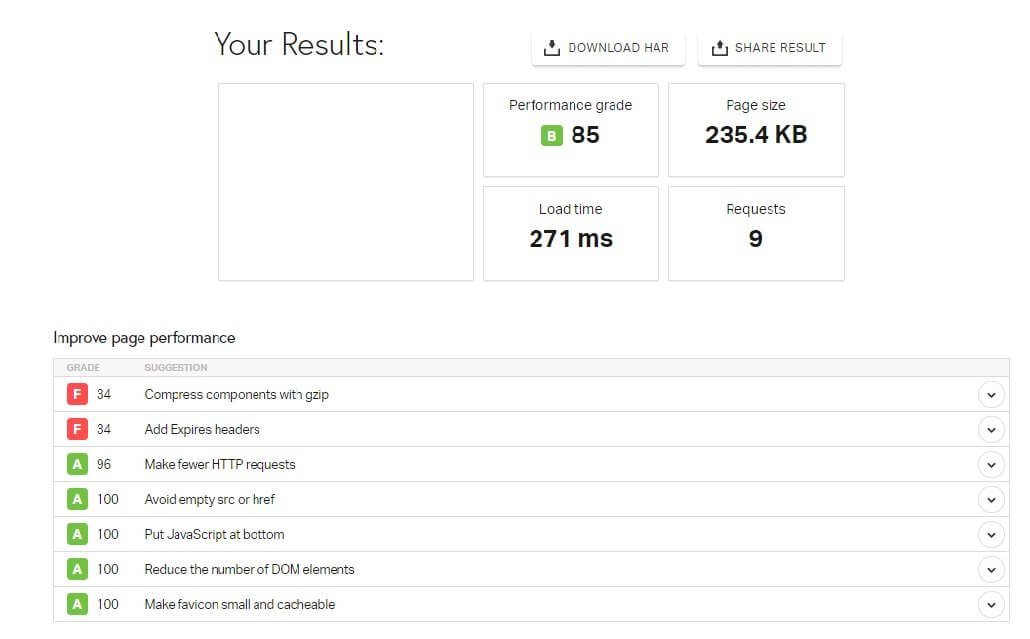
The Pingdom test shows that the webpage load time, which was 2.52 seconds previously, has now come down to 271 milliseconds.
The Google PageSpeed Insights gave this for desktop:

And this is what I received for mobile.
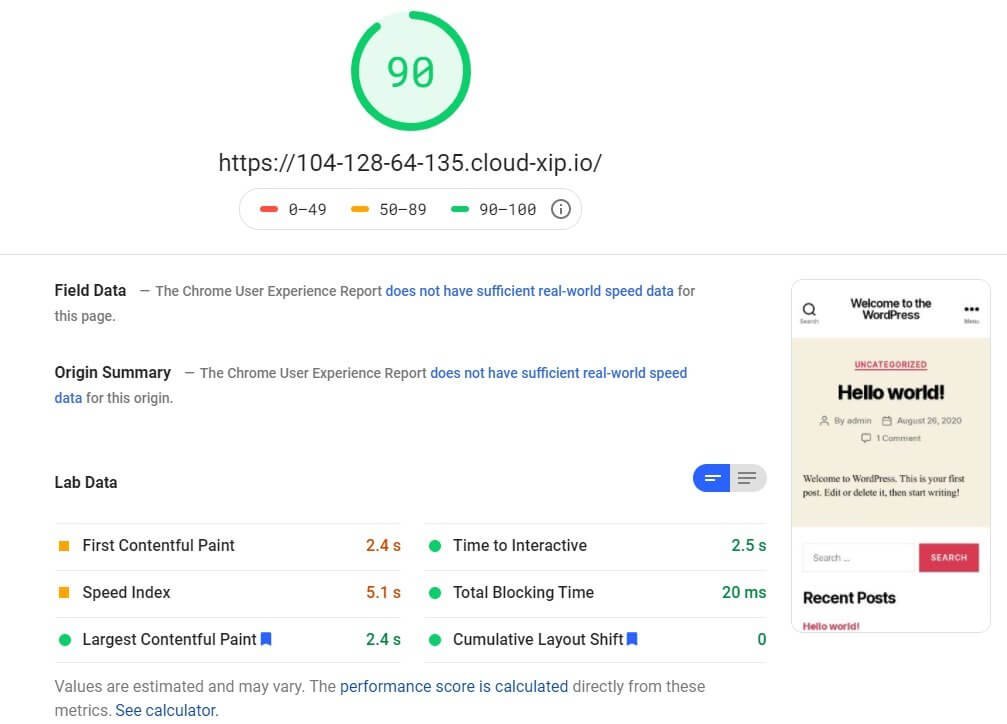
I could increase the speed further using gzip compression. However, there is no easy way to add that on an NGiNX server. If I had an Apache server, I could do that with a simple plugin or through the .htaccess file.
Since Kamatera gives NGiNX server, I have to add that using a file called nginx.conf. I need to edit that file and add this code snippet:
gzip on;
gzip_disable “MSIE [1-6]\\.(?!.*SV1)”;
gzip_types text/plain text/css text/javascript image/svg+xml image/x-icon application/javascript application/x-javascript;
gzip_vary on;
I will skip this segment because it is slightly complex.
Even without gzip compress, the speed results are impressive! Google says that your whole webpage should load within 3 seconds. That is what has been achieved on desktops.
On mobile devices, I need to go for further optimizations, which include things like gzip compression, adding CDN, and more! Once I apply those, the webpage should load within 3 seconds.
I was pretty happy with the overall performance of the server. However, I did not test a complete website with all the necessary plugins and ads running. This will definitely lead to slower speeds.
I do, however, recommend that you:
- Use a CDN
- Use image optimization methods (use WebP images)
- Use a caching plugin
- Run fewer ads on your website or blog
- Do not use web fonts
- Use gzip compression
- Use lazy loading for images
- Do not use too many plugins
These are common tips and tricks that you should use to speed up your website.
Advantages and Disadvantages of Kamatera
Kamatera has its strengths and weakness. There is no web hosting company in this world that has no weaknesses. Here is a list of strengths and weakness that I found:
The Pros
- Kamatera cloud hosting is cheap and affordable. The minimum monthly price you need to pay is $9.
- The server setup process and the WordPress installation process are quite simple.
- It allows increasing the server resources quickly.
- The Kamatera console or the dashboard is simple and intuitive.
- All WordPress installations come with a pre-installed SSL certificate from Let’s Encrypt.
- Kamatera uses SSD storage for all servers. That’s commendable because SSD storage increases the server speed.
- The pricing plans are very transparent. There are no hidden costs.
- Kamatera gives the freedom to configure the server specifications.
- The support system is fast to respond.
- The company gives a 30-day free trial, which is a rare thing.
- They have two types of billing options – monthly and hourly.
- You can select from Unlimited traffic or limited bandwidth. The limited bandwidth offers 1000 GB to 5000 GB bandwidth, depending on the data center location.
- It offers both Windows and Linux servers.
- There are four different server types to select from.
The Cons
- The WordPress installation will, by default, install a multisite version. This can be very confusing for people.
- The WordPress installation comes with a default server IP URL. Pointing the domain’s A records to server IP doesn’t change the default IP URL to domain URL even after complete DNS propagation. This was really weird. It should have happened automatically.
- Changing the default server URL to domain URL is not easy for the multisite installation. It requires fiddling around with the MySQL database. This can be extremely intimidating for those who are not experienced. There is no easy and straightforward way of doing that.
- The tech support team gives short answers to queries instead of details solutions.
- They have only 14 data centers to select from. That’s quite less.
- You can install the famous cPanel, but that will require you to have a separate license. You need to purchase the license separately.
- Server deployment takes about 10 minutes, which is longer than many providers.
Conclusion
Kamatera is a good option if you are looking for a cheap but reliable cloud hosting. I will recommend it to those who have some technical knowledge, especially with WordPress multisite installations and MySQL databases.
Even if you don’t have such an experience, you can always try it out using the 30-day free trial. It is not really that difficult to deal with a multisite installation.
Overall, Kamatera is a hosting provider that you can rely on for speed, easy scalability, and reliability.
However, be aware that if your website visitors are from Asia, you should not use Kamatera. They have only one data center there, and that too in China (Hong Kong). Also, the Asian data center provides only 1 TB of bandwidth as opposed to 5TB for all other data centers.

